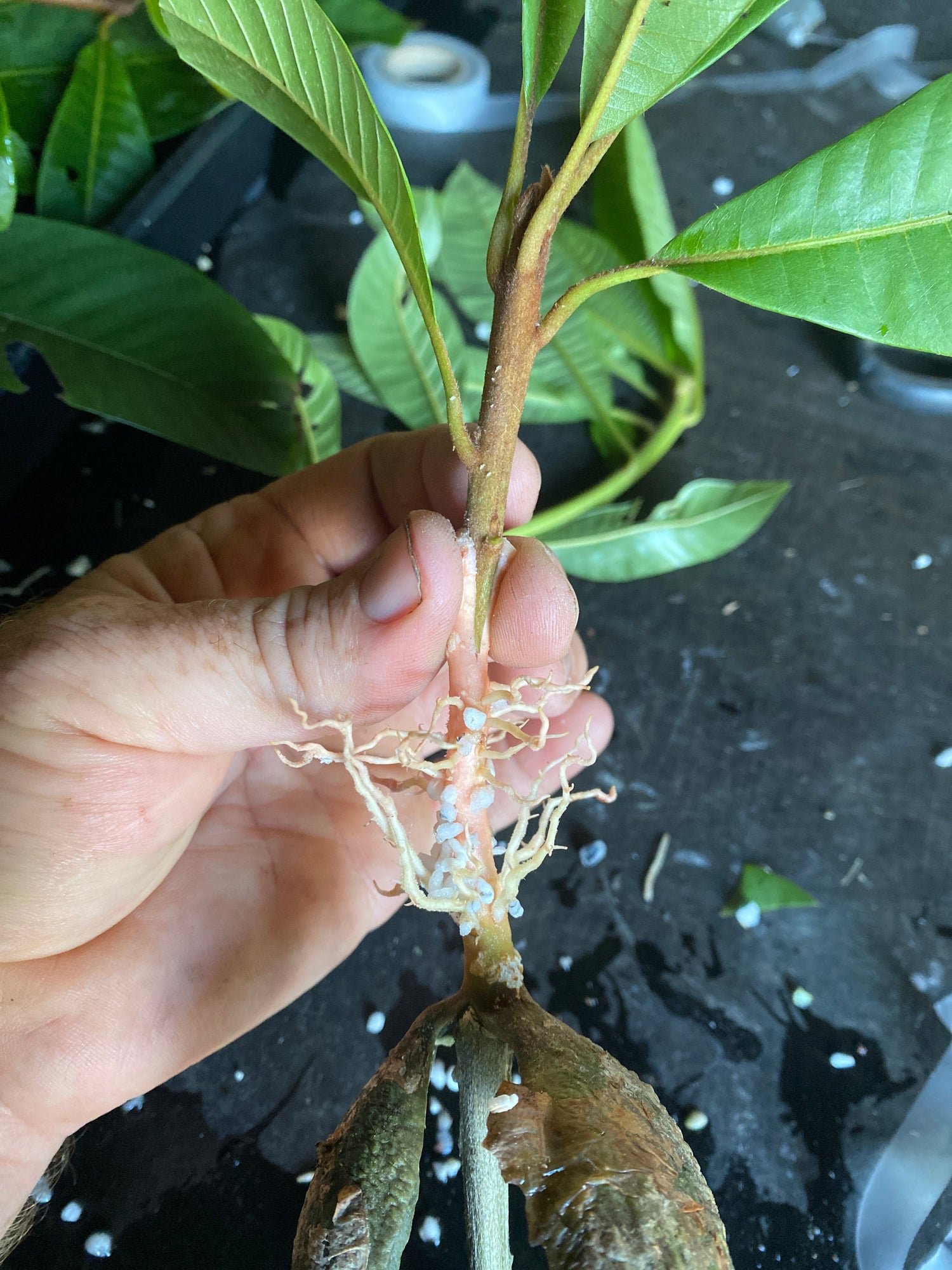
How Inverted Root Grafting is Transforming Mamey Sapote Cultivation at Tropical Fruit World
What Is Inverted Root Grafting?
Unlike traditional grafting methods, inverted root grafting involves taking a seedling and grafting the scion (fruit-producing part of the plant) onto the inverted taproot. This technique was originally trialled in Florida on Mamey Sapote and Canistel trees, with outstanding results:
- Smaller, more manageable tree size
- Denser, more productive branching
- No reduction in fruit size or quality
- Increased yield potential in limited space
Why It Matters for Mamey Sapote
Mamey Sapote (Pouteria sapota) is a tropical fruit tree known for its large, sweet, custard-like fruit. However, it comes with some challenges—namely its tall growth habit and 18-month fruiting cycle, which makes pruning and maintenance difficult.
By experimenting with inverted root grafting, our team is exploring a new way to produce dwarf Mamey Sapote trees that are easier to manage and maintain, without compromising on fruit quality or yield. This technique could help maximise orchard productivity and support more sustainable growing practices in the long term.
What’s Happening at Tropical Fruit World?
Our approach grafts on Mamey Sapote trees in the orchard are doing exceptionally well, and we’re on track to launch our new Sapote orchard area. If successful, this will be a major step forward in our ongoing mission to combine hands-on horticulture with innovative science.
Learn More
Want to dive into the research behind this method? Read the original article on Inverted Root Grafting of Mamey Sapote and Canistel by Noris Ledesma and Richard J. Campbell.


Leave a comment